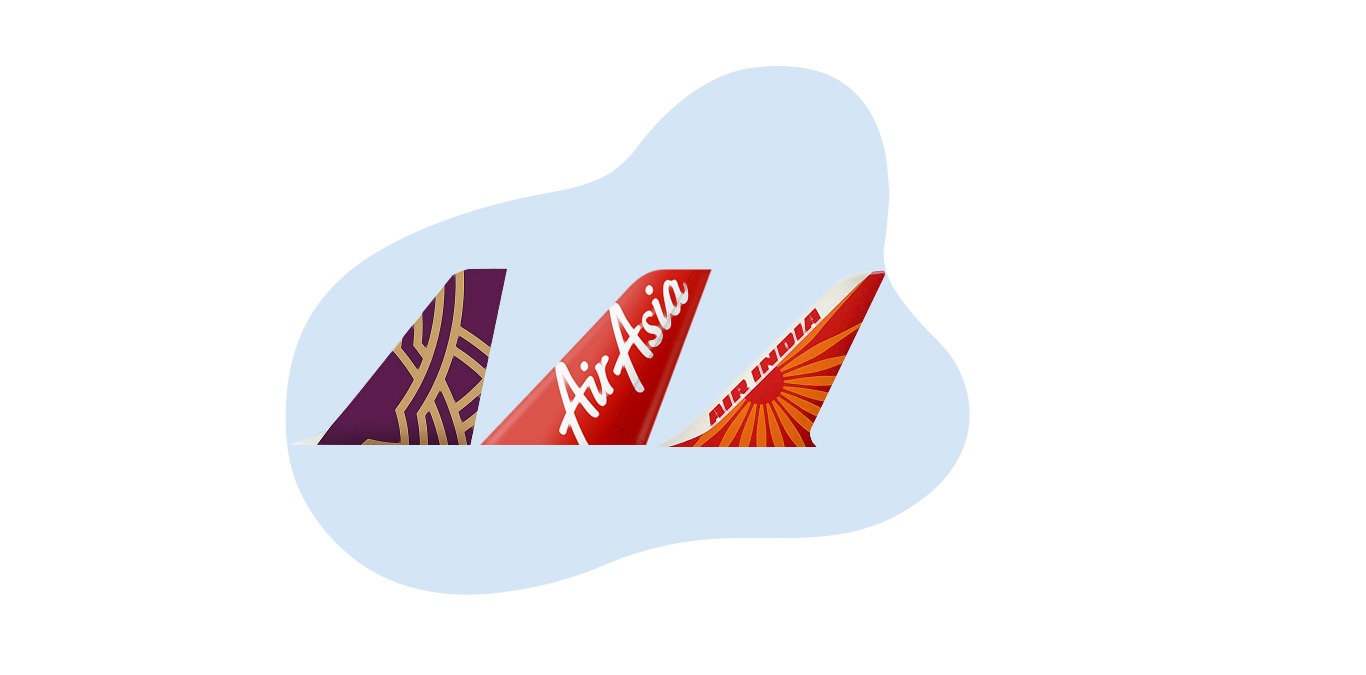What Will Tata Do With Three Airlines In Its Stable Now?
The Prime Minister Narendra Modi said, “The government has no business to be in business,” earlier this year. It was an announcement of the Government’s ambitious disinvestment and privatization plan, and Air India’s sale is the beginning of it.
In the previous article we saw, the government deplaned the national carrier and sent it back to who it belonged to – the Tatas. However, the question now is “What will the Tatas do with Three airlines in their stable?”
Yes, THREE Airlines! Besides Air India, Tata has holdings in two major airlines. The group has Vistara, a joint venture with Singapore Airlines Ltd. for full service domestic and international flights. They also hold a majority stake in a low-cost carrier Air Asia with serious Malaysian entrepreneur Tony Fernandez.
For starters, here is a bit about Vistara, Air Asia and Air India.
Air Asia (India)
Headquartered in Bangalore, Air Asia (India) is a joint venture (JV) between Tata Sons and Malaysian entrepreneur Tony Fernandez’s Air Asia Investment. Air Asia is the first foreign company to set-up a subsidiary on the Indian soil.
After the government nationalized Tata Airlines to form Air India, Tatas bade goodbye to the skies. It is Air Asia that brought the salt to automotive conglomerate back to the flying business after 60 years. Air Asia (India) began operations on June 12, 2014 with Tatas owning 51% stake. In December 2020, Tata Group increased its initial stake to about 84% from 51%.
Currently, Air Asia (India) has 28 aircrafts covering 17 destinations across the country with 240 direct and indirect flights.
Tata SIA Airlines
Tata SIA Airlines, a joint venture between Tata Sons and Singapore Airlines, operates under the brand name Vistara, a domestic and international full-service carrier. Tata sons holds 51% stake in the JV while Singapore Airlines owns the remaining 49% stake.
The company was formed on November 5, 2013. Vistara took its first flight on January 9, 2015 from Delhi to Mumbai. In the last six years, Vistara has rapidly expanded its standing, both in terms of network and service proposition. Currently, the airline has a fleet of 45 aircrafts –
- 35 Airbus A320,
- 6 Boeing 737-800NG,
- 2 Airbus A321neo
- 2 Boeing B787-9 Dreamliner.
Air India
Tata won back Air India from the government after a decade-long bidding. Post-acquisition, TATAs will own 100% stake in Air India and its subsidiary Air India Express. It is a low-cost carrier airline that focuses on short-haul international operations, especially in Middle East. TATAs will own 50% stake in the Air India SATS that offers on ground and cargo handling services. Besides, it will get a large pool of 13,500 permanent and contractual human resource.
Brands like Air India, Indian Airlines and the Maharaja will come under the TATAs ownership. Currently, Air India has a fleet of 118 wide-body and narrow body aircrafts and AIXL has a fleet of 24 narrow body aircrafts.
Race to gain Market Share
It’s an opportunity for the Tata group to gain a noteworthy market share in the Indian aviation industry. Indigo dominates the industry with 57% market share as of August 2021. Spicejet that sits on the 2nd spot lost its market share from 16.8% in June 2020 to 9.1% in June 2021 because of the pandemic.
With Air India, Vistara, and Air Asia having a current combined market share of 26.9%, the salt to airline conglomerate will emerge as the second-largest domestic airline after Indigo once all three airlines consolidate operations.

Final Words
We think consolidation is the way forward for the Tata Group. Tatas love for the flying business is not new. However, despite flying major airlines, the Tatas flying affair has not brought them much business success. As the COVID-19 pandemic marred air travel, Air Asia booked a loss of Rs. 1533cr in FY21 while Vistara recorded Rs. 1,612cr in loss.
Only time can answer how things turn out for both Air India and its former parent.
Look out for the next article, where we delve more into Tata’s plan for Air India’s turnaround.
Meanwhile, subscribe to our 5 in 5 Wealth Creation Strategy and start your wealth creation journey today.
Read more: The Maharajah Finds Its Way Back Home To TATAs
Read more: How Long-term investing helps create life-changing wealth – TOI.
How useful was this post?
Click on a star to rate it!
Average rating 0 / 5. Vote count: 0
No votes so far! Be the first to rate this post.

